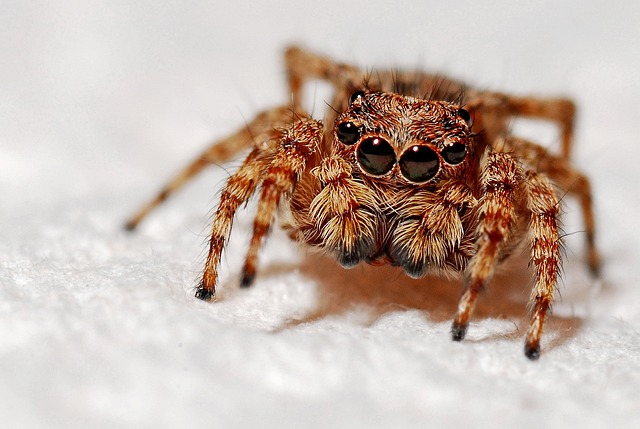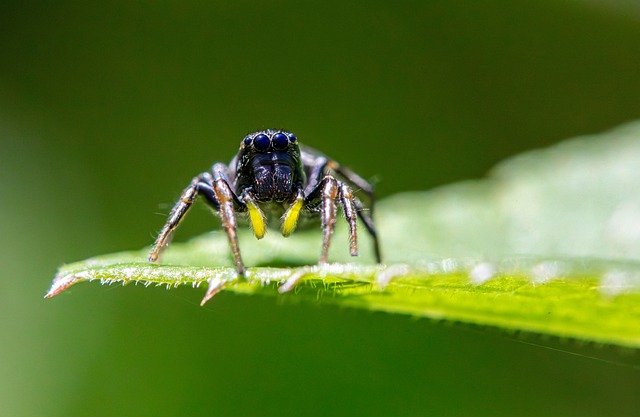Spiders are members of the class Arachnida, a diverse group of joint-legged invertebrates within the phylum Arthropoda. With over 50,000 described species and likely many more undiscovered, spiders are one of the most recognizable and ecologically significant groups of arachnids. They are found in nearly every terrestrial habitat, from tropical rainforests to deserts and even high-altitude ecosystems.

Classification
Spiders belong to the order Araneae, which is further divided into two main suborders:
- Mygalomorphae: Includes tarantulas and their relatives, known for their robust bodies and downward-pointing fangs.
- Araneomorphae: The largest group of spiders, characterized by diverse web-building and hunting behaviors.
Characteristics
- Body Structure: Spiders have two main body parts:
- Cephalothorax (prosoma): Houses the eyes, mouthparts (chelicerae), pedipalps, and legs.
- Abdomen (opisthosoma): Contains the spinnerets for silk production and internal organs.
- Legs: All spiders have eight legs, which are segmented and adapted for walking, climbing, and sometimes swimming.
- Eyes: Spiders typically have 6-8 simple eyes. Their vision varies widely; jumping spiders have excellent vision, while others rely more on vibrations and chemical cues.
Unique Features
- Silk Production:
- Produced by specialized glands in the abdomen.
- Used for various purposes: building webs, creating egg sacs, wrapping prey, and forming shelter.
- Spider silk is incredibly strong, lightweight, and elastic, often compared to steel in terms of tensile strength.
- Venom:
- Most spiders are venomous, using their fangs (chelicerae) to inject venom into prey.
- Spider venom contains enzymes and neurotoxins to immobilize and digest prey externally.
- Only a few species, such as the black widow (Latrodectus spp.) and brown recluse (Loxosceles spp.), pose a significant threat to humans.
- Mating and Reproduction:
- Males use specialized appendages (pedipalps) to transfer sperm to the female.
- Courtship behaviors often involve elaborate dances or vibrations to avoid being mistaken for prey.
- Females typically lay eggs in silk sacs, which they may guard or hide.
Behavior
- Feeding:
- Spiders are primarily carnivorous, feeding on insects and other small invertebrates.
- Some species exhibit unique hunting strategies, such as fishing spiders that capture prey from water surfaces.
- Web-building:
- Webs vary greatly among species: orb webs, funnel webs, cobwebs, and sheet webs are common.
- Not all spiders build webs; some, like wolf spiders, actively hunt their prey.
- Adaptations:
- Camouflage: Many spiders blend into their environment to avoid predators or ambush prey.
- Molting: Spiders periodically shed their exoskeleton to grow, a process known as ecdysis.
Habitat and Distribution
Spiders are globally distributed, inhabiting nearly every environment except the most extreme polar regions. They are adaptable and can be found in:
- Forests
- Grasslands
- Wetlands
- Urban areas
Ecological Role
Spiders play a vital role in ecosystems as predators. They help control insect populations, making them important for natural pest management. Some spiders are also prey for birds, reptiles, and other animals.
Interesting Facts
- Jumping Spiders: Known for their agility and excellent vision, they can leap several times their body length.
- Water Spiders (Argyroneta aquatica): The only spiders that live underwater, creating air-filled silk chambers.
- Social Spiders: Some species, like Stegodyphus, exhibit cooperative web-building and hunting behaviors.
Human Interaction
- Positive Impacts:
- Natural pest control in agriculture and homes.
- Research on spider silk for potential applications in medicine, engineering, and materials science.
- Negative Impacts:
- Fear of spiders (arachnophobia) is common but often unwarranted.
- A few medically significant species can cause bites requiring treatment.
Conservation
While most spiders are not endangered, habitat destruction and pesticide use threaten some species. Conserving natural habitats and promoting public awareness about the ecological importance of spiders are crucial for their survival.

Spiders are fascinating and ecologically important creatures. Despite common fears, they are mostly harmless and contribute significantly to maintaining ecological balance. By understanding their biology and behavior, we can appreciate their role in nature and coexist peacefully with these remarkab

